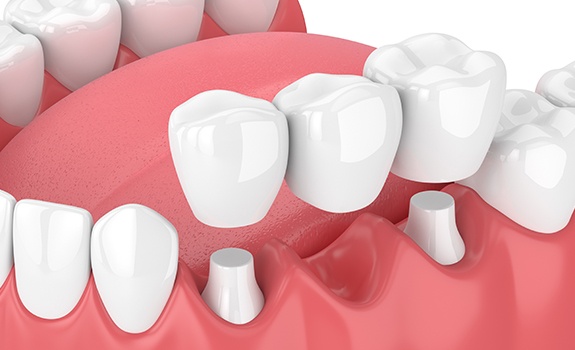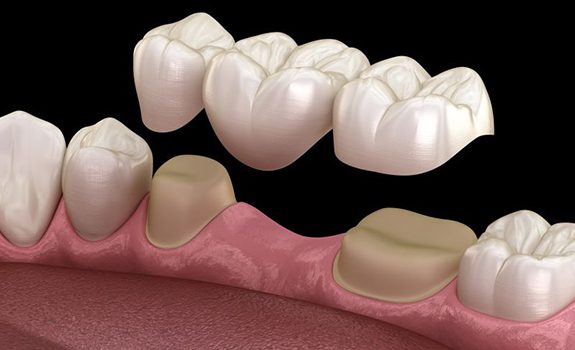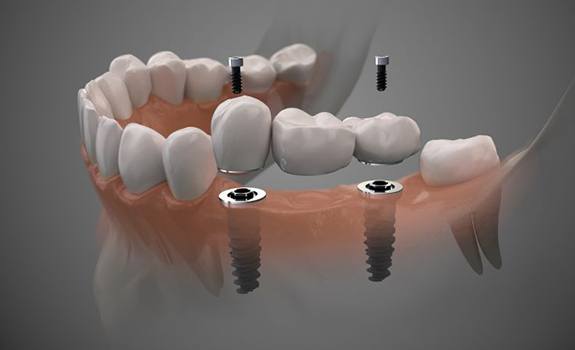Dental Bridges Rowley
A Seamless Way to Fill in Gaps

If you are missing one or more teeth, it is important that you explore options for filling in the gaps in your smile. Doing so can improve your bite, prevent oral health complications in the future, and help you have more confidence in your appearance. Our Rowley restorative dentistry team would love to help you understand your tooth replacement options. After an examination, we may recommend that you receive a dental bridge.
Why Choose J. Peter St. Clair, DMD for Dental Bridges?
- Sedation Available for Nervous and Anxious Patients
- Beautiful, Lifelike Materials that Stand the Test of Time
- Traditional & Implant Bridges Available
What Is a Dental Bridge?

A bridge is a fixed (non-removable) restoration used to replace one or multiple teeth. It usually has a crown on each end, which support one or more artificial teeth (called pontics) between them. Often, bridges are made of lifelike materials, such as porcelain. They should not be confused with partial dentures, which are removable.
Our practice offers two types of dental bridges, each of which comes with a unique set of advantages. We will recommend the one that we believe is best for your unique situation.
Types of Dental Bridges

Our team offers both traditional (fixed) bridges, as well as implant bridges. The option that is best for you will depend on the number of teeth you are missing, the health of your oral tissues, your budget, and your personal preferences. After a thorough examination, we will give our professional opinion on which options you should move forward with.
Traditional Dental Bridges

A traditional bridge has a crown on each end, which are attached to the teeth adjacent to an empty space (called the abutment teeth) and is dependent on the health and longevity of the teeth to which it is attached. Traditional bridges usually take just a few appointments to place, and with proper care, they can provide reliable function for many years.
Implant Bridges

Instead of relying on abutment teeth for support, an implant bridge is anchored directly in the jawbone via prosthetic tooth roots (known as dental implants). Implant bridges are incredibly strong and do not require that the abutment teeth be modified. This is often the best option for patients who meet the treatment criteria.
The Benefits of Getting a Dental Bridge

As a result of getting a dental bridge, you may experience multiple benefits:
- The appearance of your smile will be restored, which can result in a big boost to your self-confidence.
- With a dental bridge, you will regain the ability to chew and speak properly.
- A bridge can prevent your remaining natural teeth from drifting out of place, which in turn may help you to maintain a harmonious bite.
- Dental bridges can distribute the forces in your bite properly, which can reduce wear and tear on your remaining natural teeth.
- Bridges tend to last for many years if they receive proper care.







